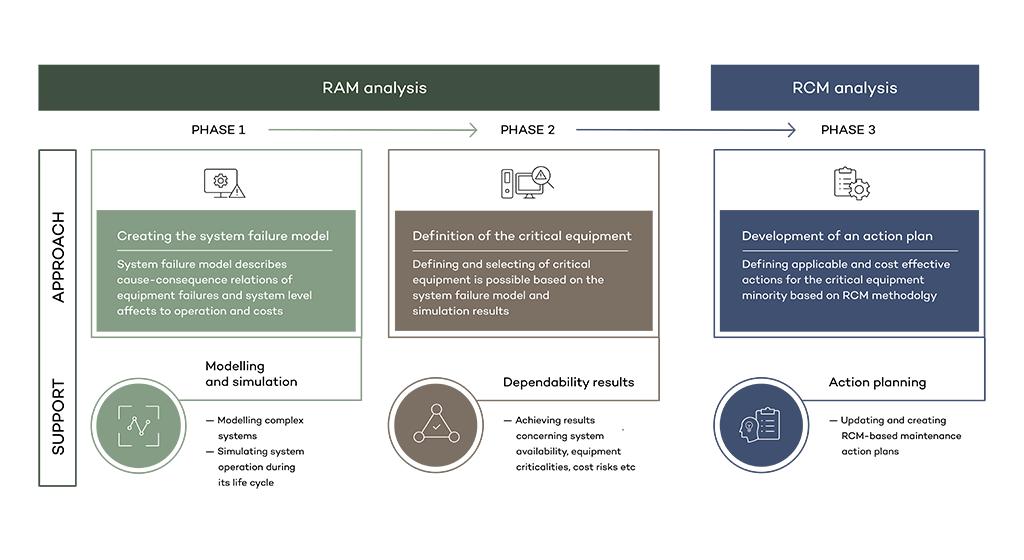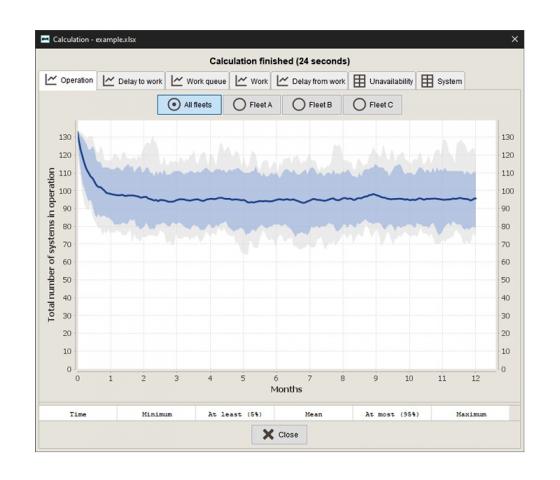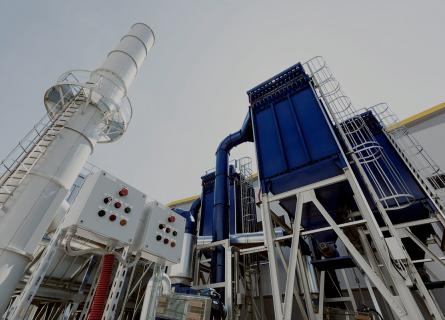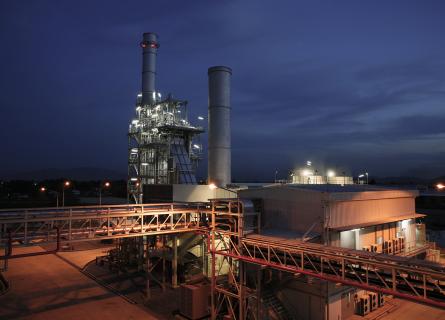
Reliability Management
Increase process efficiency, reduce system life-cycle costs and manage risks
We develop and apply advanced reliability, availability, maintainability and safety (RAMS) analysis methods, the latest risk assessment techniques, and efficient modelling and simulation tools.
Reliability Management Portfolio
- Overview
- RAMS and Risk Analyses
- Integrated Operations
- Maintenance Optimisation & Streamlined RCM
- AFRY Reliability Tools
- KRTI 4.0™
- RAMS Training – Methods & Tools
Sudden equipment failures, process disruptions and inefficiencies are causing unplanned downtime leading to billions of euros in losses across energy and process industries, annually. In a rapidly changing environment the stakeholders are increasingly forced to seek ways to improve their revenue and margins, which lead to searching for new technologies and applications to manage risks, increase efficiency, improve availability and decrease costs.
AFRY’s Reliability Management solutions and services help you to concentrate where it matters most. Our ultimate goal is to secure your optimal production capacity with an acceptable risk level, in a cost efficient way, throughout the life-cycle process.
With Reliability Management, it is a question of appreciation and willingness: do we want to assess risks related to the system availability, safety and life-cycle costs and mitigate them to an acceptable level in advance, or do we react to them after they have occurred?
Our Reliability Management services are backed by engineers, designers and advisors within infrastructure, industry and energy who are at the cutting-edge of technology and have collective expertise that spans industries and geographies.
Our product range includes:
- RAMS and Risk Analyses
- Integrated Operations
- Maintenance Optimisation and Streamlined RCM
- AFRY Reliability Tools
- RAMS Training – Methods & Tools
- KRTI 4.0™ – the Next Generation AI Platform for Operational Excellence
- SRM Smart Risk Management
RAMS stands for Reliability, Availability and Maintainability and Safety. RAMS also comprises Safety (PSA), Quality (TQM) and Risk Assessment (PRA) aspects. RAMS is an important part of overall equipment effectiveness (OEE), system life-cycle management (PLM, LCC/LCP), systematic development of operations (RCM) and reliability design (DfR).
The ability to manage and optimise these RAMS factors is a very valuable asset for any company designing a product and/or running a complex process. With our solutions and services you can:
- Recognise how the available RAMS information is currently capitalised
- Identify the most critical sub-systems, components and failure modes
- Apply sophisticated methods for reliability and risk management
- Combine qualitative and quantitative information for advanced analytics
Design for RAMS (greenfield)
- RAMS requirements allocation
- RAMS design review
- Life-cycle cost (LCC) estimation
- Maintenance actions planning
Continuous RAMS development (brownfield)
- Identification of improvement potential
- Investment and scenario analyses
- Maintenance optimisation
- Spare part storage optimisation
With the acquisition of Ramentor, AFRY further strengthens its digitalisation capabilities and advances RAMS offering for clients. Ramentor develop and distribute Reliability, Availability, Maintainability and Safety (RAMS) software tool, ELMAS.
Did you know that more than 80% of a system’s life cycle costs are determined before its commissioning?
When doing investments, the link between the CAPEX and OPEX is often weak – AFRY’s Integrated Operation approach gives a holistically optimised solution combining both.
Efficient production, being one of the key performance factors for successful business, is achieved by optimising not just the individual performance of equipment, but taking into account the whole system/plant/site from the life cycle cost optimisation point of view i.e. optimising TP and AP together. This optimised solution is called Integrated Operations.
AFRY’s asset management concept has a systematic means to analyse the improvement potential, both TP and AP. It includes methodologies on how to improve the technical performance, optimise maintenance and how to manage big data to be able to combine these all to continuously improve the production and get better and relevant data.

Integrated Operations (IO) concept combines both Technical Performance (TP) and Availability Performance (AP) to optimise the production. It is a highly recommended approach for green field projects ensuring that the project objectives are met, especially from the Life Cycle Cost point of view.
Reliability Centred Maintenance (RCM) is a comprehensive method for creating service action plans for systems. The training represents the whole RCM process with examples and provides information on how to transform the traditional RCM analysis into so called Streamlined RCM that requires significantly less resources compared to the traditional version.
We have included a Reliability Centred Maintenance (RCM) tool in our ELMAS software for supporting an effective RCM that leads to improvements in maintenance operations. Together with the visual modeling and versatile simulation functions, ELMAS RCM is a flexible and user-friendly tool.
The following list presents the seven basic questions that the RCM analyses aim to answer:
- What are the functions and performance standards of the object in its current operational environment?
- What will happen if the object fails (which functions will not be available)?
- What causes the lack or insufficiency of each function of the object?
- What happens when each failure occurs?
- What damages will each failure cause?
- What can be done to detect each failure early enough or to prevent it from happening?
- What must be done if a suitable preventive task cannot be found?
The process of RAM & Streamlined-RCM
The tool-based analysis identifies the most beneficial areas of improvement for the most critical equipment in 3 distinct phases

Benefits of RAM & Streamlined RCM analysis
The approach provides a systematic method to develop maintenance, improve reliability and reduce life cycle costs.
Traditional maintenance bias
Too often requirements are based on:
- This is how things have always been done...
- Expert/organisation has a feeling...
- This is my view on the best/cheapest way to solve...
Other biases and issues:
- Industry practices are always the best way for us...
- To maintain more is the most cost effective...
Key benefits
1. Standardised maintenance method:
- The tool-based approach offers predefined models for diferent maintenance scenarios
- The approach reduces the need to profoundly analyse all equipment
- This greatly reduces the workload compared to traditional analysis methods
2. Improved system and product performance
- The performance and expectations are based on the best available data and analyses
- This structured approach increases reliability, availability and safety
3. Reduced life cycle & costs
- The optimum compilation of different maintenance strategies helps to identify improvements in life cycle costs
AFRY Reliability Tools combine the latest theory, methods, and knowledge in the RAMS field into practical solutions & services for our customers. The advanced modelling and analysis help you to achieve understanding about complex and dynamic relations between component failures and system/process key performance indicators (KPI).
ELMAS
- Event Logic Modelling and Analysis Software (ELMAS) and our wide-ranging expertise encompasses various RAMS methods for risk management: Fault Tree Analysis (FTA), Life-Cycle Cost (LCC), Criticality classification, Failure Mode and Effects (and Criticality) Analysis (FMEA/FMECA), and Reliability Centred Maintenance (RCM). ELMAS has been developed for modelling, analysis and optimisation of systems' dependability and costs during their whole life cycle.
- ELMAS can be used, for example, to compare design alternatives, to estimate the return of investment time, and to optimise maintenance of the system. With a user-friendly graphical user interface and efficient simulation algorithms ELMAS is a powerful tool for comprehensive risk assessment and uncertainty management.
- Demo video of ELMAS
StockOptim
- One important part of reliability and risk management is to ensure the availability of spare parts that are critical for the system operation. Our StockOptim software can be used for spare part storage optimisation. It helps to provide a clear understanding on the effect that spare part storage has on dependability and to represent methods for utilisation of storage history data and managing storage strategy under the set dependability requirements.

Fleet
Our Fleet software enables simulating and analysing operation and maintenance of a fleet of several systems/vehicles. A system can be a vehicle or any other item that has failures and requires maintenance.

Reliability and maintainability simulation:
- Failure modes of each system?
- MTTF / failure distribution of each failure mode?
- MTTR / repair distribution of each failure mode?
- Preventive maintenance schedule?
Maintenance resource simulation:
- Number of maintenance persons/workshops available?
- Logistic delays to and from maintenance?
- Priority order of operations if queueing required?
Availability simulation:
- How many systems are available?
The Next Generation AI platform for Operational Excellence
A ‘single pane of glass’ providing complete intelligent learning-based insights from your smart ‘connected plant’ assets anywhere in the world. Manage your enterprise-wide asset management challenges, harness the Industry 4.0™ revolution.
KRTI 4.0 is a prescriptive maintenance tool. Its unique features are coming from integrating real time data analysis with RAM analysis to an action plan.
Asset Life Cycle Management
No current solution can solve asset lifecycle management challenges fully. You need to be smart and wise, focusing on the critical areas rather than everything, to solve the problem holistically, increasing the asset value and reducing the associated risks.
The KRTI 4.0 model based data driven framework incorporates the AFRY RAMS (Reliability, Availability, Maintainability, Safety) methodology, which defines the criticality of every asset contributing to the functioning of an OT system. Infosys’ NIA knowledge-based AI platform continuously executes complex, advanced analytics and machine learning models and exchanges information with the RAMS model to identify any inherent risk inoperations on the overall system. Nokia provides the pervasive, secure industrial IoT connectivity and network analytics for integrating with data and devices from different OT systems, including IMPACT IoT platform, SI Suite – advanced visualisation, Scene Analytics – machine learning video analytics, dedicated wireless networks based on LTE and 5G along with its ‘Worldwide IoT Network Grid’ (WING) – sold in conjunction with mobile network operators - which supports dedicated IoT operations, billing, security, data analytics, and more. This data can then flow into the NIA system for the execution of forecasting models.
KRTI 4.0 has been designed as an enterprise-wide decision support tool where learnings from one facility are seamlessly shared across the whole enterprise, accelerating analytical knowledge. KRTI 4.0’s hierarchical smart dashboards enable CEOs to profile enterprise risk and understand potential exposures at a glance.
AFRY offers versatile training in cooperation with its partners (for example AEL) to serve the needs of many different industry sectors. There are several training packages available that can be combined to create the best overall training entity covering your company needs. Duration of the customized trainings varies between 1–4 days depending on chosen packages and available time.
AFRY training packages
RAMS basics
- Terminology: Reliability, Availability, Maintainability, Safety
- Theory
- Basic information recommended for every training entity
Design for RAMS (greenfield)
- Design phase risk management
- Life-cycle cost (LCC) and resource optimization
- Certifying availability requirements and creating maintenance action plans
Continuous RAMS development (brownfield)
- Operation phase risk management
- Identifying improvement potentials and actions
- Justification of investments and upgrading maintenance action plans
RAMS methods
- Criticality classification
- FMEA/FMECA – Failure Mode and Effects (and Criticality) Analysis
- FTA – Fault Tree Analysis
- RCM – Reliability Centered Maintenance
Spare part storage optimization
- Ensuring availability of critical spare parts
- Optimizing storage costs
- StockOptim software
ELMAS tool
- Modeling RAMS with a software tool
- Simulating and analyzing RAMS
- Analysis result evaluation and reporting
Hands-on project training
- Practical learning with a pilot project
- Combines training and RAMS development project


Interested in our offering? Contact us!





